Women's Clubs
Women’s clubs were some of the first organizations to attempt social reforms. Indeed, Tennessee women worked hard alongside men to help change the world in which they
Women’s clubs were first formed as social clubs devoted to cultural activities. However as problems of this time became more obvious, these clubs became more involved in reform issues.
While suffrage was a major concern for women during this time, one of the first ways in which Tennessee women began to participate in politics was through the Temperance Movement .
It began as a religious issue. Evangelical preachers denounced drinking alcohol as a sin. Others said it was responsible for many of society’s problems including unemployment, employees calling out sick, and physical violence.
In fact, the Women’s Christian Temperance Union (WCTU) was instrumental in introducing women into the world of politics. Elizabeth F. Johnson began a local union chapter in Memphis in 1875, and Nashville established one around 1881. Mrs. C. H. Phillips organized a segregated African American chapter in Memphis in 1887.
In the coming years the WCTU would spread throughout Tennessee to include 130 unions, 14 of which were African American. There were also ten more which were for youth.
By 1886 the numerous temperance groups in the state formed the Tennessee Temperance Alliance, and together they called for a state constitutional amendment for prohibition. However, legislation failed to pass in 1887 and membership declined.
Women continued to pursue government and social reforms. These included adding female police officers to handle female prisoners, reform schools for juveniles, and group homes for young women. Women and others believed that it was important to separate young juvenile offenders from the older prisoners, so courts and facilities especially for young delinquents were first established during this period.
Susan Scruggs and members of the Memphis Playground Association, which promoted public playgrounds, also helped establish a system for juveniles in Memphis. The Young Women’s Christian Association, the National Consumers League and other groups were also prominent during this time.
Clubs to teach women homemaking skills began in 1914 under the USDA Cooperative Extension Service. Tennessee had begun a women’s extension service in 1911 through the University of Tennessee. By 1915 they had 26 agents in the field.
In Tennessee, these agents did programs on projects which could increase the home’s cash income. These included canning, raising chickens, and fruit production. These state agents only worked with white women.
However the General Education Board at Tuskegee Institute paid for African American agents—usually teachers working during the summer school break. Agents taught sewing to both black girls and women, and help organize community improvement projects like whitewashing homes and school buildings.
Fannie Battle from Nashville had much tragedy in her life. Her two brothers were killed during the Civil War. She was sent to prison for spying on Union troops. After the war, her fiancé was killed in a train accident on the day they were to marry. Alone, she began teaching school and doing volunteer work at her church.
When the Cumberland River in Nashville flooded in 1881, Battle helped to organize the Nashville Relief Society to provide aid to those left homeless. The society was renamed United Charities in 1901 with Battle serving as president. It was dedicated to helping poor women, including establishing day care centers. Wealthy women volunteered for the group and help raise money.
In 1913 African American and white women in Nashville cooperated to form the Bethlehem House, an organization which provided kindergartens, youth clubs, mother clubs, and classes in the domestic arts such as cooking and sewing. Almira Steele helped establish a similar institution in Chattanooga, which served disadvantaged children.
Picture Credits:
- Photograph of the “Women’s Christian Temperance Union.” This photo was taken in Bemis, Tennessee in 1900. It features a 4th of July parade float made by members of the Women’s Christian Temperance Union. Union University.
- Photograph showing women service organizations in a parade. This photo was taken on July 14, 1918. The women are participating in the Bastille Day Parade on Market Street in Chattanooga. Chattanooga-Hamilton County Bicentennial Library.
- Photograph showing La Guardo Home Demonstration Club members. This photo was taken in Horn Springs, Tennessee in 1918. Tennessee State Library and Archives.
- Photograph showing a canning demonstration. This photo was taken at the Oakland Club house in Wilson County, Tennessee in 1920. It features young women demonstrating how to can and preserve food. Tennessee State Library and Archives.
- Photograph showing the Woman’s Christian Temperance Union Charter members. This photo was taken in 1897 in Savannah, Tennessee. Tennessee State Library and Archives.
- Photograph of an unknown chapter of the United Daughters of the Confederacy. This photo was taken in Jackson, Tennessee on May 11, 1900. Tennessee State Library and Archives.
- Photograph showing a culling demonstration. Culling refers to plucking a chicken or preparing any animal that is going to be eaten. In this photo an older woman shows younger girls how to cull. This photo was taken in 1920 in Wilson County, Tennessee. Tennessee State Library and Archives.
Confronting the Modern Era >> Life in Tennessee >> Making Life Better >> Women's Clubs
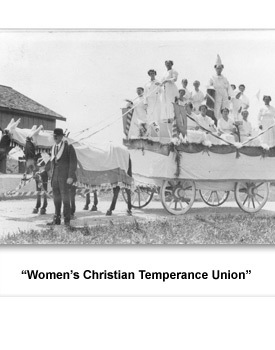
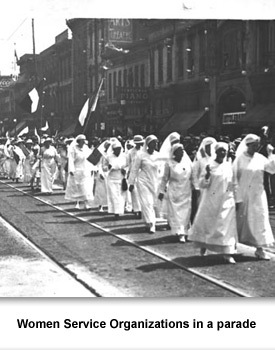
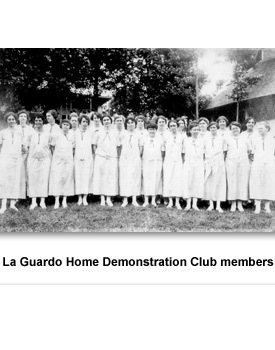
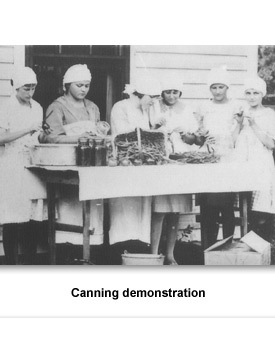

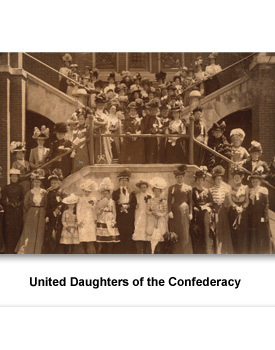
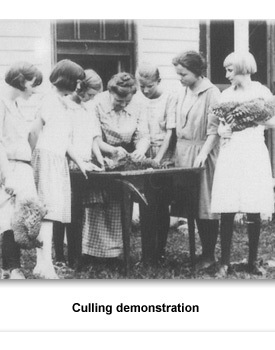
 Sponsored by: National Endowment for the Humanities
Sponsored by: National Endowment for the Humanities